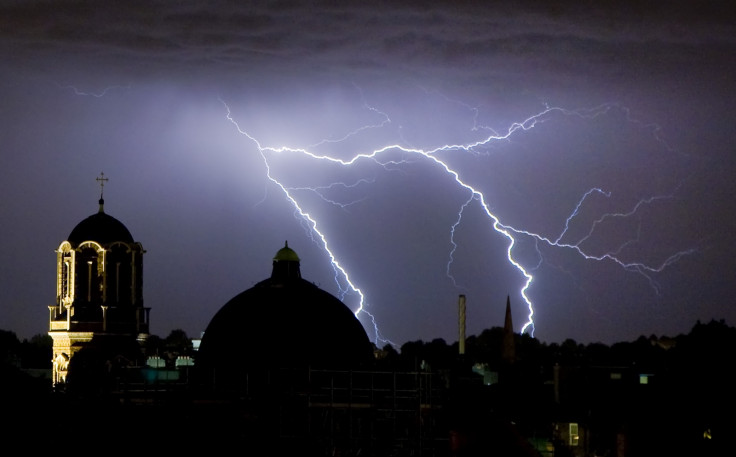Mysterious antimatter cloud detected inside thunderstorm defies explanation

An unknown class of antimatter detected when an aeroplane flew through a thundercloud six years continues to perplex scientists on its source.
Powerful storms have been known to produce positrons — the antimatter particle of electrons — but the antimatter observed by Joseph Dwyer from the University of New Hampshire defies any explanation on the process that produced it.
The team calculates that a short-lived cloud of positrons, 1–2 kilometres across, had surrounded the aircraft. But the large number of expected increase in accompanying gamma rays (γ-rays) was not seen.
"We saw a positron cloud, then another positron cloud about seven kilometres away and then we saw a bright gamma-ray glow afterwards," Dwyer told Phys Org.
Reporting the result now in the Journal of Plasma Phys, the team notes that the particle detector on board the jet picked up three spikes in γ-rays at energy of 511 kilo electronvolts, clearly signalling a positron annihilating with an electron.
"The fact that, apparently out of nowhere, the number of positrons around us suddenly increased by more than a factor of 10 and formed a cloud around the aircraft is very hard to understand. We really have no good explanation for it," says Dwyer, a lightning expert and the UNH Peter T Paul Chair in Space Sciences at the Institute for the Study of Earth, Oceans and Space.
What could have produced such a cloud has proved hard to say.
Source of positrons
Research by Dwyer and others has shown that storms also produce positrons, as well as highly energetic photons, or γ-rays.
Electrons discharging from charged clouds accelerate to close to the speed of light, and can produce highly energetic γ-rays, which in turn can generate an electron–positron pair when they hit an atomic nucleus.
But the team did not detect enough γ-rays with sufficient energy to do this.
The positrons could have originated from cosmic rays colliding with atoms in the upper atmosphere which also produces γ-rays.
But what steered the positrons to the plane, and a lack of other types of radiation induced by the motion of positrons complicates the finding.
The team's data is a "cast-iron signature" of positrons, Jasper Kirkby, a particle physicist who heads an experiment investigating a possible link between cosmic rays and cloud formation at the CERN, told Scientific American.
But he doubts the team's estimate of the size of the positron cloud.
A smaller cloud could imply the positrons were annihilating only close to the aircraft, or on the craft itself influenced by the electric fields produced by the craft. This could initiate positron production, but Dwyer is not inclined to believe that.
Dark lightning?
Another idea is that a kind of discharge in the storm creates a dark lightning as opposed to normal lightning where high-energy particles are accelerated and produce positrons, which help discharge the electric field.
"This is the idea of 'dark lightning,' which makes a lot of positrons," says Dwyer. "It's possible, but none of the explanations are totally satisfying."
Dwyer now plans to send balloons straight into the most violent storms, and the US National Science Foundation even plans to fly a particle detector on an armoured anti-tank plane.
Positrons and electrons have the same physical behaviour, except that electrons have a negative charge while positrons, as their name implies, have a positive charge.
For every normal particle there is an antiparticle, such as an electron and its positron, which, when brought together, annihilate each other in a flash of gamma rays.
© Copyright IBTimes 2024. All rights reserved.








